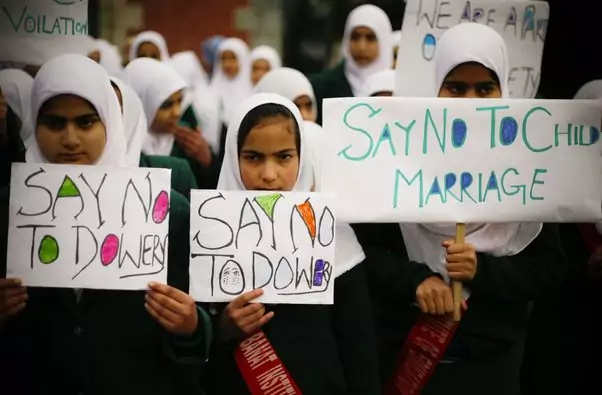According to Wikipedia, the dowry system in India refers to the durable goods, cash, and real or movable property that the bride’s family gives to the groom, his parents, and his relatives as a condition of the marriage.
Although dowry payment has been prohibited in India since 1961, it is still widely practised there.
According to Wikipedia, the dowry system in India refers to the durable goods, cash, and real or movable property that the bride’s family gives to the groom, his parents, and his relatives as a condition of the marriage.
What’s the origin of dowry payment?
The history behind dowry in India
Dowries have a history that dates back to medieval India when they served as a way to financially support daughters after their marriage. The British administration back then institutionalized the practice of dowry, making it the standard method of marriage. Because societal roles were rigidly defined, women were primarily responsible for household duties, raising children, and pleasing their husbands.
The horrors of dowry payment
Although giving a dowry was a way to ensure the groom didn’t face a sudden financial strain, making for a smoother transition into married life, the dowry system, unfortunately, took a dark turn, with husbands and in-laws resorting to violence to extort larger dowries from the bride’s families.
This can mean anything from physical, sexual, and emotional abuse to horrifying acts like genital mutilation, burning, or acid attacks. In these dire circumstances, women are pushed to the brink of suicide.
Savra Subratikaan, a New Delhi-based advocate for women’s rights, told the Pulitzer Centre that it is not uncommon for husbands to “violently beat, emotionally torture, withhold money, push them out of the house, keep them away from their children, keep mistresses openly, or even burn the wife alive.”
Read more: These tribes encourage their children to have sexual relations
Despite the fact that dowry payments have been illegal since 1961, the enforcement of laws and legislation against it has remained difficult to implement.
Amendments in 1986 made it possible to investigate any violence or death within the first seven years of marriage as potential dowry-related crimes. Unfortunately, much of this violence goes unreported.
The ripple effect on women’s lives
The dowry system casts a long and dark shadow over the lives of women in India. Ironically, families discourage their daughters from pursuing higher education to save on dowry costs, which rise with each year of schooling. To many families, investing in a girl’s education is a waste of money as she will never advance in her career. They’d rather confine the girls to household chores in preparation for their lives as housewives.
Also, another reason for marrying young girls is to cut dowry costs, which potentially adds to India’s high rate of child marriage. These women are treated as liabilities, commodities and properties to be passed on. Burdens rather than individuals with dreams and potential.
In a nutshell, the dowry tradition in India is deeply rooted and keeps affecting women’s lives. It’s a tradition intertwined with history and societal norms, but it’s also a practice that, over time, has caused immeasurable pain and suffering to a lot of Indian women.













